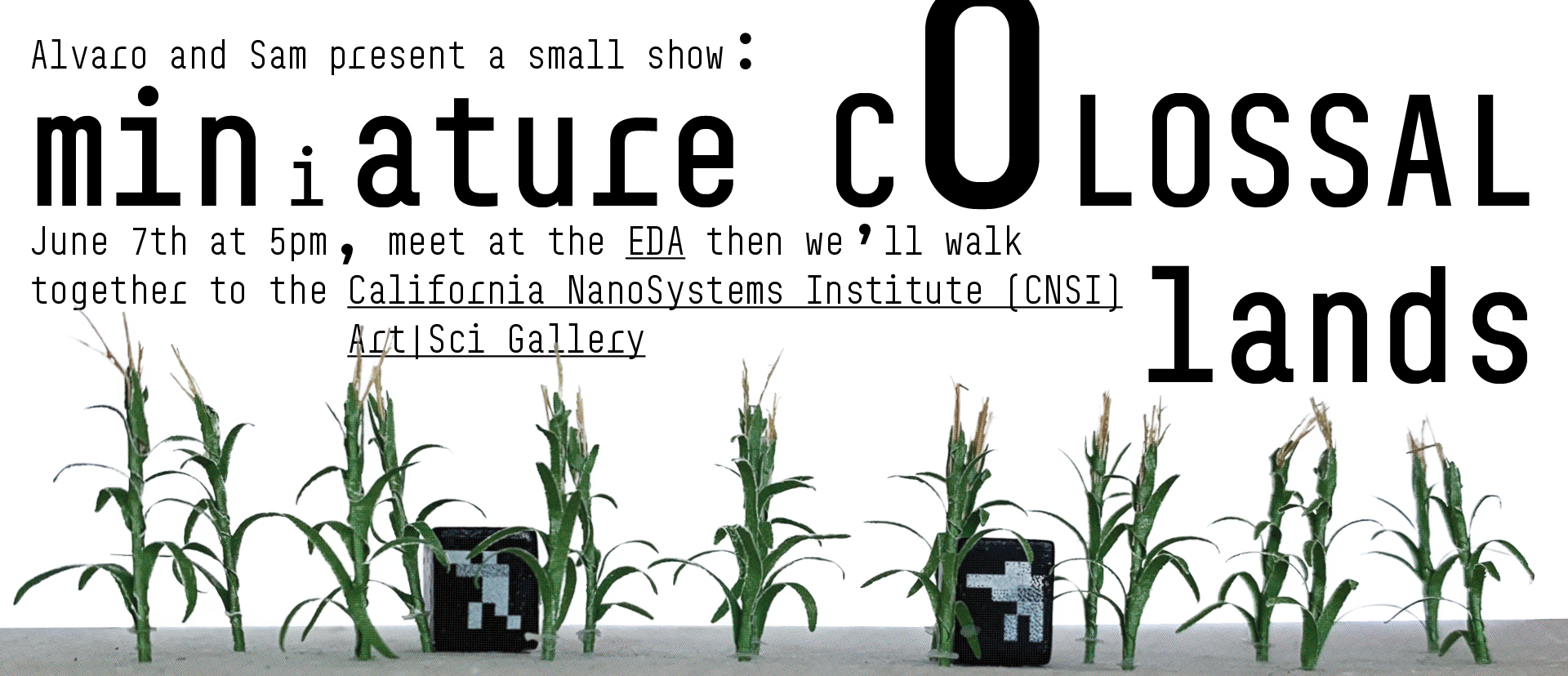MINIATURE COLOSSAL LANDS
Category: Exhibition
Date: Jun 2022
Location: Art|Sci Gallery, California NanoSystems Institute (CNSI)
Exhibition Components:
1. Tortilla Maps (2020)
2. Blue Revolution (2022)
3. Maize should be Capitalized, book (2022)
4. Maize should be Capitalized, signage from event (2021)
Exhbition Description
Alvaro and Sam present to you a small show. Though one deals with the ecological and botanical and the other with games and [power]fantasy, the works of both attempt to contain massive systems, ecologies, and histories within small objects. Attempting to retain in each the contingencies, nuances, complexities, and contradictions of their colossal subjects. Collected are 3 works by each artist:
In Tortilla Maps, Alvaro burns the 600 year drainage process of the Valley of Mexico [Anahuac] into the surface of hand-made tortillas. Sam’s Dust Knights transforms the coincidences and constraints of a player's home into a treacherous fantasy-land for microscopic creatures. Maize Should be Capitalized seeds 10,000 years of human/maize interaction in a plot at the UCLA Botanical Gardens. In Game Pieces 0: Rules for the Construction of the Role Playing Games interpretations of game design are illustrated through the perspective of the lowest and most numerous game piece, the pawn. In Alvaro’s newest work a science lab briefcase sprouts rows of plastic corn. And in A Modern Wargame, a 250 gigabyte video game with millions of active users is re-built through printed zines and 1 centimeter tall game pieces.
Alvaro and Sam present to you a small show. Though one deals with the ecological and botanical and the other with games and [power]fantasy, the works of both attempt to contain massive systems, ecologies, and histories within small objects. Attempting to retain in each the contingencies, nuances, complexities, and contradictions of their colossal subjects. Collected are 3 works by each artist:
In Tortilla Maps, Alvaro burns the 600 year drainage process of the Valley of Mexico [Anahuac] into the surface of hand-made tortillas. Sam’s Dust Knights transforms the coincidences and constraints of a player's home into a treacherous fantasy-land for microscopic creatures. Maize Should be Capitalized seeds 10,000 years of human/maize interaction in a plot at the UCLA Botanical Gardens. In Game Pieces 0: Rules for the Construction of the Role Playing Games interpretations of game design are illustrated through the perspective of the lowest and most numerous game piece, the pawn. In Alvaro’s newest work a science lab briefcase sprouts rows of plastic corn. And in A Modern Wargame, a 250 gigabyte video game with millions of active users is re-built through printed zines and 1 centimeter tall game pieces.
